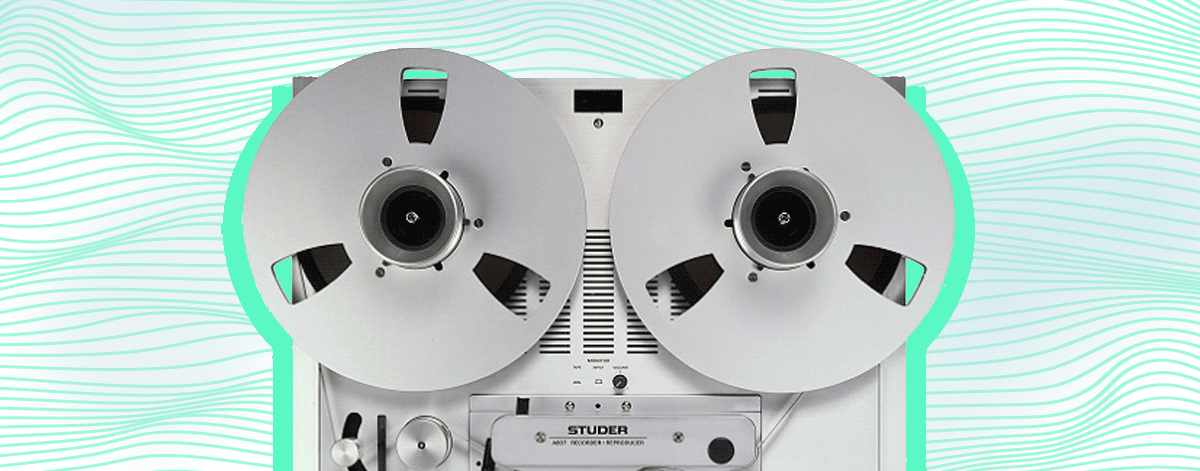Engineers can get pretty fired up when they’re talking about mixing music.
Your sound is a difficult thing to describe—throw in a layer of technical jargon and it can be downright frustrating to talk about your tracks.
Fortunately, there are some common terms engineers use to help communicate mix issues and the qualities of sound.
I’ll go through seven of the most common ‘odd’ mixing terms, what they mean and how to deal with the elements of your mix they refer to.
Boomy
Boominess refers to excessive low frequency energy that causes exaggerated sustain effects on your speakers.
For example: “I want this kick to be fat, but right now it’s just boomy.”
“I want this kick to be fat, but right now it’s just boomy.”
Speakers can only accurately reproduce so much low end.
Too much lows can make the speakers to struggle. This causes negative effects that radiate all the way up the frequency spectrum.
How to fix it:
Deal with boomy bass by using a high-pass filter on sources with a lot of low end.
Move the filter up until you start to hear a negative impact on the sound—you might able to cut more than you think.
Muddy

Muddy generally means congestion from a buildup of competing elements in your low midrange.
For example: “The whole mix gets muddy when I unmute the bass, maybe I should cut some 250 Hz.”
The low midrange is a tough region for beginner and intermediate engineers. When it’s too muddy, the clairity and separation of instruments takes a hit.
How to fix it:
Avoid a muddy mix by carving out your low-mids wherever they’re not essential to your desired sound.
Instruments that traditionally dominate the low end of the spectrum like kick and bass are a first choice for low-mid scooping.
Most of the energy in these sources should be concentrated in the low end so the mids are less crowded for other instruments.
Boxy

A sound or mix composed of mostly midrange frequencies with not enough lows and highs.
For example: “These guitars are too boxy, we should try a mic with more high end.”
“These guitars are too boxy, we should try a mic with more high end.”
A boxy mix sounds flat and can lack detail. You’ll see why when you mix reference against a well-produced commercial recording.
How to fix it:
Avoid boxiness by making sure to not over-boost your mids or neglect the extreme ends of your frequency spectrum.
Warmth

Warmth typically refers to harmonic distortion and un-hyped top end.
For example: “Wow, adding that tube compressor plugin really warmed up this vocal.”
Warmth is a sought after quality often attributed to analog equipment. It’s part of what makes a mix smooth, rich and enjoyable to listen to.
“Wow, adding that tube compressor plugin really warmed up this vocal.”
How to get it:
Create warmth by gently rolling off your highs and using saturation/analog style processors.
Be sure to do so in moderation—too much artificial saturation from analog emulation plugins can tip the scales back toward harshness. Don’t take it too far!
Harsh

Harshness is often used to describe aggressive upper midrange that’s fatiguing to listen to.
For example: “The square wave synth is pretty harsh, can you bring down the filter’s cutoff frequency a bit?”
Harshness is a major problem in lots of mixes. The last thing you want is for your mix to cause ear fatigue for your listeners.
The effects of a harsh mix can be even worse on common listening systems like earbuds and laptop speakers.
How to fix it:
Avoid harshness by being extra careful with your EQ and mic positioning when dealing with energy in the 3-5 kHz range.
Depth

“Panning the room mics wider seems to give the drums a bit more depth.”
Depth is the three-dimensional quality of a mix.
For example: “Panning the room mics wider seems to give the drums a bit more depth.”
Depth is desirable for creating the immersive sensation that draws listeners in to your mixes.
It helps with instrument separation and the overall sense of space.
How to get it:
Use a mix of close micing and distance micing while tracking to give yourself a variety of ambiences to blend during mixing.
Different sources at different perceived distances and pan positions will help establish the depth of your mix.
Air

Air is the subtle liveliness in the upper frequencies of a mix.
For example: “The overhead ribbon mics sound pretty dark and could use some air.”
Air brings out the realism and dimension in sources like vocals and room mics. A smooth, open, airy top end is a common aim for many mixes.
“The overhead ribbon mics sound pretty dark and could use some air.”
Think of air as a present, pleasing and well EQ’d treble range in your mix.
How to get it:
Use a gentle bell or shelving filter on your smoothest sounding EQ to lightly boost the top end anywhere from 8-16 kHz.
Be careful though! Going overboard can introduce harshness into your track. A little bit goes a long way!
Subtle air in your mix can help your vocals sit smoothly on top of everything else and make your room mic recordings lively and realistic.
What we talk about when we talk about mixing
Mixing is a highly subjective process, so the terms we use to describe it are too.
Every engineer probably feels differently about what exactly “air,” or “depth” means for them.
The definitions of these terms are just guidelines to get you thinking and talking about the issues or strengths in your mix and how to better aim for a specific sound.
Now that you know what it all means, go deeper into your mix with a better destination in mind!
The post 7 Abstract Mix Terms: What They Mean and How To Use Them appeared first on LANDR Blog.